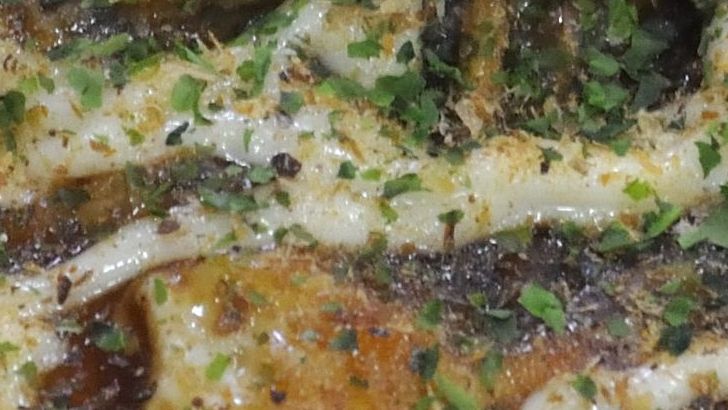Korean Hwachae: The Viral Fruit Punch That’s More Than Instagram Eye Candy

Picture this: it’s a sweltering summer day, and you’re craving something refreshing that isn’t just another boring smoothie. Enter hwachae, Korea’s answer to the perfect summer cooler that’s been quietly taking over social media feeds across America. Viral exposure on TikTok for delights like Hwachae, a sweet Korean fruit punch, has forged a cultural bridge that shows no signs of slowing down. But this isn’t just another fleeting internet trend – hwachae has roots stretching back thousands of years.
Hwachae has been enjoyed in Korea for thousands of years and was originally made with flower petals that were soaked in water sweetened with honey. In fact, the word “Hwachae” itself is a combination of the Korean words “hwa,” which means flower, and “chae,” which means tea. What makes this drink so special is its incredible versatility and communal nature. Unlike Western fruit punches loaded with artificial colors and overwhelming sweetness, hwachae celebrates the natural flavors of seasonal fruits in a delicately balanced, refreshing base.
The modern version that’s capturing American hearts typically combines fresh watermelon, strawberries, and other seasonal fruits with a fizzy soda and milk mixture, creating a creamy yet refreshing drink that’s part dessert, part beverage. Hwachae has become a viral topic on TikTok, thanks to a mukbang video by Amy Flamy, also known as the “3 AM girl”. What started as a traditional Korean cooling method has evolved into an Instagram-worthy masterpiece that brings people together around shared bowls, just like it has for centuries. The beauty lies not just in its taste, but in the ritual of sharing – everyone dipping their spoons into the same beautiful, fruit-filled bowl.
Ukrainian Borscht: Beyond the Beet Prejudice

Let’s address the elephant in the room – most Americans hear “beet soup” and immediately wrinkle their noses. But dismissing borscht because of beet aversion is like avoiding chocolate cake because you don’t like cocoa powder on its own. In English, the word borscht is most often associated with the soup’s variant of Ukrainian origin, made with red beetroots as one of the main ingredients, which give the dish its distinctive red color. This isn’t just some weird vegetable water – it’s a complex, deeply satisfying soup that has sustained entire cultures through harsh winters for centuries.
The magic of borscht lies in its incredible depth of flavor. It is typically made by combining meat or bone stock with sautéed vegetables, which – as well as beetroots – usually include cabbage, carrots, onions, potatoes, and tomatoes. Depending on the recipe, borscht may include meat or fish, or be purely vegetarian; it may be served either hot or cold. Think of it as Eastern Europe’s answer to a hearty minestrone, but with an earthy sweetness that’s completely unique. The beets don’t overpower – they provide a subtle, almost wine-like undertone that complements the rich broth beautifully.
While beet borscht is a staple throughout Eastern Europe, it has ancient Slavic origins dating back over a millennium, with the modern beetroot version evolving over centuries. Over time, this inspired a wide array of tart soups, among which the Ukrainian beet borscht was most popular. What makes borscht particularly appealing to American palates is its flexibility – it can be a light, refreshing summer soup when served cold with a dollop of sour cream, or a warming, stick-to-your-ribs winter meal when served hot with crusty bread. The fermented tanginess and rich, complex flavors make it surprisingly addictive once you give it a fair chance.
Ethiopian Injera and Stews: The Ultimate Communal Dining Experience

Forget everything you know about bread – injera isn’t just a side dish, it’s literally your plate, your utensil, and the foundation of one of the world’s most fascinating dining experiences. Almost all the Ethiopians consume this food at least once in a day. This Ethiopian national super food appreciating in many western countries due to the superior nutritional properties, especially lack of gluten and good mineral compositions (Rich of Iron). Made from teff, the world’s smallest grain, injera is a fermented flatbread with a distinctive sour tang and spongy texture that’s unlike anything in Western cuisine.
But here’s where it gets really interesting – eating Ethiopian food isn’t just about the food itself, it’s about the entire social ritual. The communal dining experience involves a large injera platter placed in the center of the table, surrounded by various stews (wots). Diners tear off bite-sized pieces of injera and use them to scoop up the wots. Picture sitting around a table with friends, everyone eating from the same large platter, tearing off pieces of this tangy, spongy bread to scoop up incredibly flavorful stews. It’s intimate, it’s interactive, and it completely transforms the way you think about sharing a meal.
The stews themselves are revelations – complex, spiced creations like doro wat (spicy chicken stew) or misir wat (red lentil stew) that showcase Ethiopia’s mastery of spice blending. Berbere is the masala of Ethiopian cooking, it’s a mixture of different spices that forms the backbone of flavor for many dishes. Chili powder, fenugreek, ginger, garlic, cardamom, cinnamon, and whole bunch of other spices are combined to make berbere. Gursha involves scooping a morsel of stew or wot with a piece of injera and feeding it to someone directly by hand. This action signifies love, respect, and a sense of deep connection between the giver and receiver. This tradition of feeding each other, called gursha, elevates dining from simple sustenance to an expression of care and connection that’s increasingly rare in our fast-paced world.
Japanese Okonomiyaki: The Pancake That Breaks All the Rules

Imagine if a pancake and a pizza had a baby, raised by Japanese comfort food traditions, and you’ll start to understand okonomiyaki. Literally translating to “grilled as you like it,” this savory pancake from Osaka is the ultimate customizable comfort food that somehow manages to be both hearty and surprisingly light. It starts with a simple batter of flour, eggs, and shredded cabbage, but from there, the possibilities are endless – bacon, seafood, cheese, vegetables, or whatever strikes your fancy.
What makes okonomiyaki particularly appealing to American palates is its familiar cooking method combined with completely unexpected flavors. You cook it on a griddle just like pancakes, but instead of syrup, it’s topped with a complex array of sauces – tangy okonomiyaki sauce (think Worcestershire with attitude), creamy Japanese mayonnaise, dried seaweed flakes, and dancing bonito flakes that curl from the heat. The texture is wonderfully satisfying – crispy on the outside, tender and almost custard-like on the inside, with the cabbage providing a fresh crunch that keeps each bite interesting.
The beauty of okonomiyaki lies in its democratic nature – it’s street food that doesn’t pretend to be fancy, but delivers incredible satisfaction. In Japan, it’s often cooked at your table on built-in griddles, turning dinner into an interactive experience. It’s the kind of dish that encourages experimentation and personalization, making it perfect for families where everyone has different preferences. Plus, it’s surprisingly economical – a few simple ingredients can create a filling, satisfying meal that feels both exotic and comforting.
Peruvian Ceviche: The Art of Cooking Without Heat

If you think raw fish is just sushi, you’re missing out on one of South America’s greatest culinary achievements. Peruvian ceviche represents a completely different approach to “cooking” fish – using acid instead of heat to transform raw seafood into something magical. The process is deceptively simple: fresh fish is “cooked” in citrus acid (traditionally lime), mixed with onions, chili peppers, and cilantro, creating a dish that’s simultaneously refreshing, complex, and deeply satisfying.
What sets Peruvian ceviche apart from its cousins throughout Latin America is the quality and technique involved. The fish must be impeccably fresh – we’re talking caught-that-morning fresh. The acid balance has to be perfect, with just enough lime juice to “cook” the fish without overpowering its delicate flavor. Tiger’s milk, or leche de tigre, is the leftover citrus marinade that many consider the best part – a complex, spicy, umami-rich liquid that’s sometimes drunk as a shooter.
For Americans hesitant about raw fish, ceviche offers a perfect gateway because the acid treatment gives it a completely different texture and flavor profile than sushi. The fish becomes opaque and firm, almost like it’s been gently poached, while maintaining a fresh, clean taste that’s enhanced rather than masked by the accompanying ingredients. Served with sweet potato, corn, or plantain chips, it’s a light yet satisfying meal that embodies everything great about Peruvian cuisine – fresh ingredients, bold flavors, and techniques perfected over centuries.







